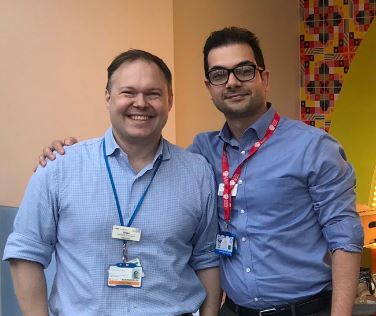Busting children’s safeguarding myths

For the second year running, Safeguarding Children’s Week at The Royal London Hospial was held to raise awareness and help build staff safeguarding knowledge.
We walked around every single inpatient ward, clinic and ED to do so and by the end of the week the team had contact with a minimum of 700 staff.
We also ran five different teaching sessions in ED over four days, an adolescent safeguarding themed Schwartz Round and an adolescent safeguarding themed M&M.
I’m really pleased to announce that our staff are really well informed and that in particular, far more staff this year (compared to last year) are clear that the legal age at which children are no longer subject to children’s safeguarding is on their 18th birthday. I thought this would be a good opportunity to bust some other common children’s safeguarding myths.
Myth 1: You become an adult at 16
No - Whilst young people gain the right to consent to their own medical care and are often admitted to adult wards after their 16th birthday, they are still subject to Children’s Safeguarding legislation until their 18th birthday. If you have any safeguarding concerns please contact the children’s safeguarding team or the named nurse on-call (not the adult safeguarding team).
Myth 2: You need an adult patient’s consent to make a child protection referral on one of the their children
No - Adults can decline an adult safeguarding referral on their own behalf, but consent is not required for a children’s safeguarding referral. It is always best practice to inform a parent or guardian that you are making a referral to Children’s Social Care but you do not require their consent.
If you are concerned that by informing the parent that you may place the child or yourself at increased risk of harm, then you do not need to inform them of the referral, but you should only do this after discussion with the children’s safeguarding team or named nurse on-call and you must clearly document your reasons for not informing the parent in the referral and the medical notes.
Myth 3: Domestic Violence only affects children if they see it happen in person
No - Children do not need to either witness or hear an episode of domestic violence to be affected by it. There is always an emotional impact from living in a house where there is domestic violence. Any staff member who becomes aware that an adult has been the victim of a domestic violence assault should confirm if the adult is a parent or guardian or any child or young person under 18. They should discuss with the children’s safeguarding team or named nurse on-call for advice on making a referral.
Myth 4: Any adult related to a child can sign a consent form on the child’s behalf
No - Only someone holding legal parental responsibility (PR) can sign a medical consent form on a child’s behalf. The child may consent themselves if they are deemed to have Gillick competency (equivalent to having capacity). Otherwise PR is held by:
- Biological Mother
- Biological Father IF:
- Parent were married at time of child’s birth OR
- Father is named on birth certificate (after Dec ‘03)
- Adoptive parent
- Local authority if child is in care
- Anyone else who holds a “Parenting Order” or “Special Guardianship”
Myth 5: GDPR (General Data Protection Regulation) has changed how we share children’s safeguarding concerns
No – The Data Protection Act 2018 and GDPR do not prohibit the collection and sharing of personal information, but rather provide a framework to ensure that personal information is shared appropriately. In particular, the Data Protection Act 2018 balances the rights of the information subject (the individual whom the information is about) and the possible need to share information about them .
This is specifically documented in “Working Together to Safeguarding Children 2018”.
Myth 6: The Death of a 16 year or 17 year old in ED or on an adult ward should be treated the same as the death of a 60 or 70 year old
No –There is a specific process – the Child Death Overview Process (CDOP) – that needs to be completed following the death of any child or young person before their 18th birthday. This is irrespective of whether the death is expected or unexpected.
If you are involved with the death of any such patient always ensure that either the named nurse on-call or the consultant paediatrician is contacted and they can advise you on the necessary processes.
For support, contact the safeguarding children lead in your area (62KB) or take a look at our tip sheet. (891KB)
Giles Armstrong
Consultant in Paediatrics Emergency Medicine,
Named Doctor for Children’s Safeguarding (RLH site)
Clinical Director for Integrated Paediatrics (RLH site)
